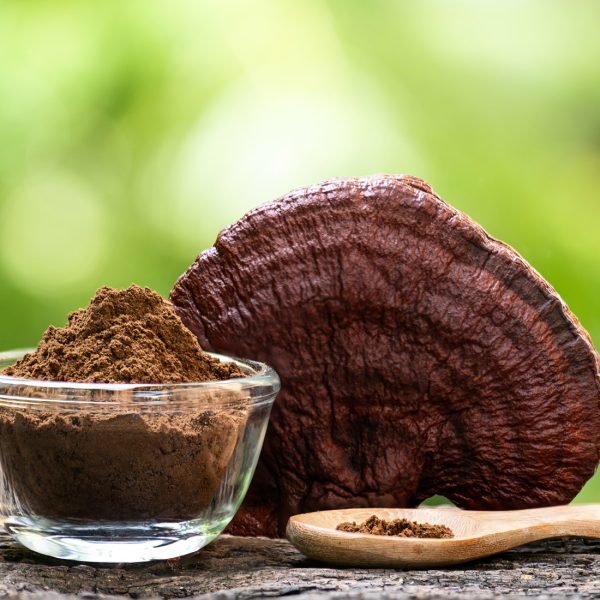Blepharitis and conjunctivitis are both inflammatory eye conditions. We explore the causes and treatments for both of these conditions.
Understanding blepharitis and conjunctivitis

Blepharitis and conjunctivitis are both inflammatory eye conditions. Although they present with some similar symptoms such as itchy eyes and photosensitivity (sensitivity to light) (1, 2), they are two distinct conditions affecting different parts of the eye.
There are some possible common causes for both conditions, such as being of bacterial or viral origin, and whilst blepharitis can in some cases lead to conjunctivitis, an important distinguishing factor between them is that blepharitis is usually non-contagious, whereas conjunctivitis is often contagious (can be passed from one person to another).
Blepharitis is an inflammation of the eyelids and thought to be one of the most commonly encountered eye conditions, in the US alone an estimated 5% of patients visiting healthcare providers present with signs or symptoms of blepharitis, and over 37 – 47% of those attending appointments with ophthalmologists and optometrists (3). In the UK 71% of cases of eye inflammation presenting to the emergency department are attributed to blepharitis and conjunctivitis (4).
Blepharitis may be acute or chronic. Acute blepharitis symptoms tend to be present over a shorter period of time, and it can be ulcerative or nonulcerative. Chronic blepharitis tends to present with symptoms over a longer period of time, or symptoms that keep recurring, and can be linked to meibomian gland dysfunction (MGD) or seborrheic blepharitis (1). Research found that over 35% of chronic blepharitis diagnoses are associated with MGD and keratoconjunctivitis sicca (KCS) (5).
In cases associated with blepharitis, it is specifically ‘evaporative’ keratoconjunctivitis sicca, which is caused by loss of the tear film in the eye due to abnormally rapid evaporation, probably resulting from a degraded normal oil layer such as in seborrheic blepharitis. This is sometimes also referred to as ‘dry eye’ (6).
Conjunctivitis is an inflammation or infection of the conjunctiva, which is the mucous membrane covering the sclera (white part of the eyeball). It is the most common eye complaint presenting in healthcare settings which features redness of the eye (7). Conjunctivitis is usually acute, which refers to symptoms lasting between 3 – 4 weeks (although this is usually 1 – 2 weeks and the condition is often self-limiting), chronic conjunctivitis is defined as lasting more than 4 weeks.
How do blepharitis and conjunctivitis work?

Despite being an extremely common eye complaint, the understanding of how blepharitis works is still somewhat confusing due to categorisation of primary or secondary, and acute, or chronic, and the various factors which influence those.
Blepharitis is an inflammation of the eyelid margin, and often categorised based on the location of this inflammation (1).
Lash margin involvement is referred to as anterior blepharitis and can involve staphylococcal or seborrheic blepharitis. When the meibomian gland posterior to the lash margin is involved, usually as MGD, this is referred to as posterior blepharitis.
Blepharitis appearing in the canthal region (the corners of the eyes where the upper and lower lids meet), it is referred to as angular blepharitis, and this is often independent of anterior or posterior blepharitis. Marginal blepharitis refers collectively to involvement of both anterior and posterior blepharitis (8).
Understanding the root
Despite how common blepharitis is, the precise pathogenesis is still under investigation and discerning the root is somewhat complex with many various possibilities. It is hypothesized to be multifactorial, including inflammatory skin conditions (in many cases it is associated with dermatological conditions such as seborrheic dermatitis, rosacea, and eczema (3), chronic lid margin infections, and parasitic infections.

Blepharitis is categorised as ‘primary’ or ‘secondary’, which although can be somewhat confusing along with the acute and chronic categorisation, it does provide some information about its origin or root.
Primary blepharitis tends to arise as part of a more complex aetiology, which often encompasses skin conditions including rosacea, seborrhea, or hypersensitivity caused by staphylococcal toxins (8).
Secondary blepharitis is usually an infectious process, which may be bacterial, viral, from phthiriasis (wasting of the tissues), or an infestation of demodex (mites that live on hair follicles) and tends to be a result of these distinct disease entities, where treatment of the underlying infection or infestation will often result in the resolution of the blepharitis (8).
However, there is overlap between primary and secondary blepharitis, their presenting signs and symptoms, and further classification of acute and chronic blepharitis.
The acute and chronic classification for blepharitis perhaps provides clearer understanding of the roots of the condition.
Acute blepharitis can be ulcerative or non-ulcerative. Acute ulcerative blepharitis is normally secondary to an infection of the eyelid margin where the eyelashes begin, which becomes inflamed, affecting the lash follicles and meibomian gland function. It is usually of bacterial origin (often staphylococcal) and presents with crusting. It can also be of viral origin (herpes simplex, or varicella zoster), which tends to present with a clearer liquid discharge (1).
Acute non-ulcerative blepharitis is usually an allergic reaction affecting the same part of the eyelid margin and can be associated with an atopic blepharo-dermatitis or seasonal allergic blepharo-conjunctivitis.
Chronic blepharitis is a non-infectious inflammation, usually of unknown origin, and often with meibomian gland dysfunction or seborrheic dermatitis. Secondary keratoconjunctivitis sicca usually accompanies chronic blepharitis resulting in ‘dry-eyes’.
The meibomian glands produce lipid (meibum) which forms a lipid layer on the eyelid border. The function of this lipid layer is to reduce the evaporation of tears, keeping the eyes sufficiently moist. In meibomian gland dysfunction the ducts of the glands become blocked with waxy deposits, due to a change in the composition of the lipids, and possibly due to crusting which builds up (often associated with seborrheic dermatitis or acne rosacea). These deposits on the eyelid borders also provide sites for bacterial colonisation.
This emphasises the importance of eye hygiene during bouts of blepharitis in order to remove any waxy deposits or crusting which builds up around the eyelid margin.
Blepharitis can lead to conjunctivitis due to irritation from eyelashes become redirected inwards, from waxy / crusty deposits, infection from bacterial build-up, or ‘dry-eye’ due to tear evaporation.
Conjunctivitis itself is usually due to either an infection of bacterial or viral origin, an allergy, or an irritation from foreign bodies such as dust, wind, smoke, chemicals, and other types of air pollutants. It tends to present with reddening (hyperemia) of the conjunctiva and discharge from the eyes (2).
Conjunctivitis is often acute and self-limiting (it will clear-up within a week or two), but in some instances it can be chronic, such as infections, allergic conditions, and in other cases such as changes to the shape of the eyelid (ectropion / entropion), or blepharitis.
Acute conjunctivitis can be caused by many different bacteria but can be chronic in certain instances when the origin is chlamydia. Bacterial conjunctivitis can also be caused by gonorrhoeae, which is usually due to sexual contact with someone who has genital infection (14).
Viral conjunctivitis is highly infectious, usually acute, and accounts for 80% of all acute cases of conjunctivitis (9). It is caused by an adenovirus in around 90% of viral conjunctivitis cases, often associated with the common cold, or other less common viruses such as measles, chickenpox, rubella, and mumps, it tends to be self-limiting. Between 1.3 – 4.8% of viral conjunctivitis cases can be linked to enteroviruses or herpes simplex virus. It can also manifest in cases of Ebola virus and SARS-CoV-2 infections, which is why testing for conjunctivitis must be carried out with caution (10).
Signs and symptoms
Blepharitis

Symptoms common to all forms of blepharitis include:
- Itching and burning of the eyelid margins
- Conjunctival irritation with lacrimation
- Photosensitivity
- Foreign body sensation.
Symptoms tend to be worse in the early morning than those of keratoconjunctivitis sicca, which tend to be worse toward the end of the day.
Symptoms of acute blepharitis
In acute ulcerative blepharitis in addition to the above pustules can develop in eyelash follicles and turn into small ulcers. If this type of ulcerative blepharitis is recurring, it can cause scars and misdirection of eyelashes.
In acute non-ulcerative blepharitis eyelid margins become swollen and red, eyelashes may become crusted with dried fluid.
Symptoms of chronic blepharitis
With meibomian gland dysfunction, enlarged glands on eyelid edges, which exude a waxy, thick, yellowish secretion.
In seborrheic blepharitis, greasy, easily removable scales develop on eyelid margins.
Most patients of both seborrheic blepharitis and meibomian gland dysfunction have symptoms of:
- Keratoconjunctivitis sicca
- Foreign body sensation
- Grittiness
- Eye strain and Eye Fatigue
- Blurring with prolonged visual effort
Conjunctivitis
All types of conjunctivitis tend to present with:
- Discharge
- Diffuse conjunctival vascular dilation
Discharge may cause the eyes to crust overnight which can blur vision, but once discharge is cleared, vision should be unaffected.
These symptoms are more specific to each type of conjunctivitis:
Symptoms of allergic conjunctivitis
- Itching
- Watery discharge
- Papillary hyperplasia
Symptoms of viral conjunctivitis
- Irritation or foreign body sensation
- Photophobia
- Discharge
Symptoms of bacterial conjunctivitis
- Purulent discharge
Herbal solutions
Since inflammation and immunity are behind appropriate herbal solutions to support these conditions, the guidance of a professional is recommended. Herbalists can be found in our resources section. The following herbal solutions are aiming to support the symptoms of blepharitis and conjunctivitis rather than getting to the root cause, since this can be obscure due to the complex classification system.

Eyebright (Euphrasia officinalis) is astringent (toning for tissues) and anti-inflammatory making it excellent for toning mucous membranes and particularly helpful for conjunctivitis, blepharitis, and itching eyes, reduces inflammation, toning mucous membranes, reducing secretions, and reduces itching (antihistamine) (10).
Dried herb as infusion, compress or liquid extract for topical use.
NB: for eye bath with dried herbs decoct for 10+ minutes boiling and transfer to sterile container.
Fennel (Foeniculum vulgare) traditional topical use for conjunctivitis and blepharitis, and supposed to strengthen the eyesight (10).
Echinacea root for additional immune support and as anti-inflammatory (11).
Raspberry Leaf (Rubus idaeus) topically for its astringency to tone inflamed tissues and dry secretions (10).
Ribwort (Plantago lanceolata) internally generally for allergies and rhinitis, hay-fever (11).
Barberry (berberis spp.) according to Ayurveda is useful in conjunctivitis, taken as a decoction (12).
Pomegranate (Punice granatum) is also recommended according to Ayurveda for conjunctivitis, decoction of the fruit powder or rind, probably because it is astringent and tonifying for the tissues, reducing inflammation in mucous membranes (12).
Jasmine flowers (Jasminium grandoflorum) according to Ayurveda are helpful in conjunctivitis, as they are considered cooling and calming, cooling the blood, and providing strong antibacterial and antiviral action (12).
Holistic solutions
- Eye hygiene is important for reducing likelihood of infections, this includes avoiding touching the eyes with hands, using clean towels, and regularly changing pillowcases.
- Since the underlying factors for both blepharitis and conjunctivitis involve inflammation and potentially infection, then adopting lifestyle changes to support reducing inflammation, and a healthy immune system will be beneficial, especially in recurrent or chronic cases.
- This can include appropriate diet such as whole-foods anti-inflammatory diet
- Taking sufficient sleep and rest
- Finding strategies to manage stress
References
- Blepharitis. MSD Manual Professional Version website. https://www.msdmanuals.com/professional/eye-disorders/eyelid-and-lacrimal-disorders/blepharitis?query=blepharitis. Accessed June 13, 2022.
- Overview of Conjunctivitis. MSD Manual Professional Version website. https://www.msdmanuals.com/professional/eye-disorders/conjunctival-and-scleral-disorders/overview-of-conjunctivitis?query=conjunctivitis. Accessed June 13, 2022.
- Lemp MA, Nichols KK. Blepharitis in the United States 2009: a survey-based perspective on prevalence and treatment. Ocular Surface. 2009;7(2):1–14. doi.org/10.1016/S1542-0124(12)70620-1
- Nijm LM. Blepharitis: Classification. In: Ocular Surface Disease: Cornea, Conjunctiva and Tear Film. Elsevier Inc. 2013: 55 – 60. https://www.sciencedirect.com/science/article/pii/B9781455728763000080. Accessed June 13, 2022.
- Nelson JD, Shimazaki J, Benitez-del Castillo JM, et al. The international workshop on meibomian gland dysfunction: report of the definition and classification subcommittee. Invest Ophthal Vis Sci. 2001;52(4):1930–1937. doi: 10.1167/iovs.10-6997b.
- Keratoconjunctivitis Sicca. MSD Manual Professional Version website. https://www.msdmanuals.com/professional/eye-disorders/corneal-disorders/keratoconjunctivitis-sicca. Accessed 13 June 2022.
- Ryder EC, Benson S. Conjunctivitis. [Updated 2022 May 1]. In: StatPearls [Internet]. Treasure Island (FL): StatPearls Publishing; 2022 Jan-. Available from: https://www.ncbi.nlm.nih.gov/books/NBK541034/
- Putnam CM. Diagnosis and management of blepharitis: an optometrist’s perspective. Clin Optom. 2016;(8):71-78. doi:10.2147/OPTO.S84795.
- Danthuluri V, Grant MB. Update and Recommendations for Ocular Manifestations of COVID-19 in Adults and Children: A Narrative Review. Ophthalmol Ther. 2020;9(4):853-875. doi:10.1007/s40123-020-00310-5.
- Viral Conjunctivitis. MSD Manual Professional Version website. https://www.msdmanuals.com/professional/eye-disorders/conjunctival-and-scleral-disorders/viral-conjunctivitis. Accessed June 13, 2022.
- Bone K, Mills S. Principles And Practice Of Phytotherapy. China: Churchill Livingstone Elsevier; 2000.
- Bone, K, The Ultimate Herbal Compendium. Warwick, Queensland: Phytotherapy Press; 2007.
- Frawley D, Lad V. The Yoga of Herbs. 2nd ed. Twin Lakes: Lotus Light Publications; 2008.
- Acute Bacterial Conjunctivitis. MSD Manual Professional Version website. https://www.msdmanuals.com/professional/eye-disorders/conjunctival-and-scleral-disorders/acute-bacterial-conjunctivitis. Accessed 13 June 2022.































